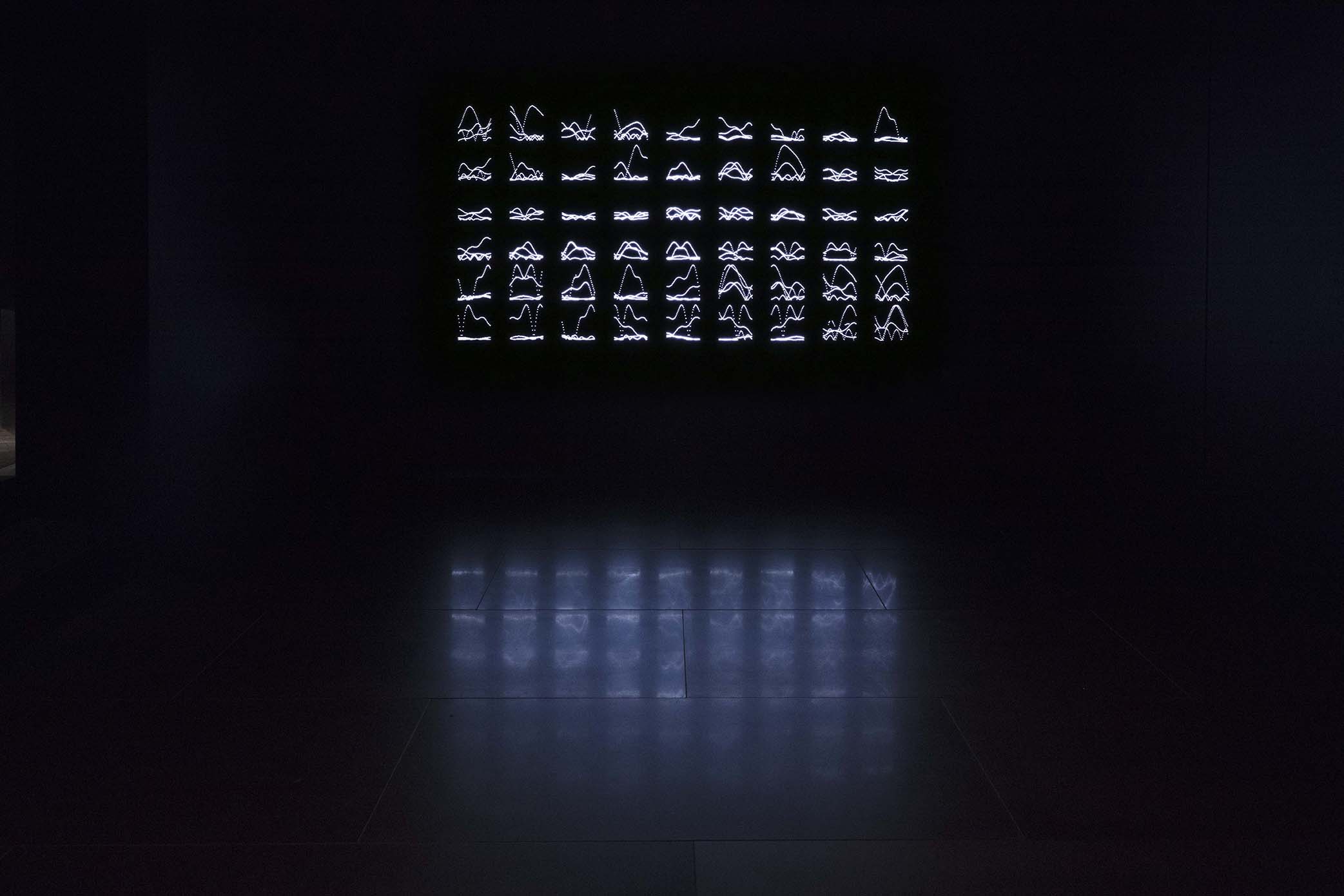Shows
Catherine Christer Hennix’s “Thresholds of Perception”


Thinking about infinity is a tricky matter. Though it is a familiar concept, there is no evidence that our universe contains physical matter that can be described as infinite. And yet many of the systems that humans have built to describe our presence invoke endlessness. From a young age, we learn to count, and that numbers can go on forever. As we grow older, some may claim that they hold boundless love for another. Infinity, it seems, is an idea that comes naturally to us.
Much of Swedish artist Catherine Christer Hennix’s work links up with infinity, simultaneously tackling the idea via mathematics, philosophy and science. Though primarily known for her aural arrangements, the artist has also created works in other mediums, some of which have rarely been shown in public. To mount the exhibition “Thresholds of Perception” at Hong Kong’s Empty Gallery, co-curators Alexander Lau and Lawrence Kumpf dived into Hennix’s archives for a presentation that spans the artist’s practice from the late 1960s until the present.
Hennix is one of the pioneers who used computers to generate composite waveforms, which eventually led to explorations in just intonation—an instinctive, ratio-based tuning that departs from the more familiar equal temperament typical of Western classical music. The countless hours spent observing the visual output on oscilloscopes are referenced in six lightboxes in the exhibition: in Topos #1 to #6 (all 1974/2018), we see a waveform gradually becoming untangled. These visualizations of sound prime us for two other works that feed into each other. Sonoilluminecences (2018) is an emission of two sustained tones in a bath of faint indigo light; as we move through the darkened space, the tones change solely in our perception, as their harmonics shift how we discern the sound that reaches our ears even though the signals remain constant. Immersed in this environment, we see two costively rotating rings in the video animation Nur (For Marian Zazeela) (2005). Like Necker cubes, we can’t tell the loops’ insides from their outsides. That ambiguity—in both image and sound—drives what the artist once called a “sustained out-of-body experience in an altered state of consciousness.” Unlike in most musical and video narratives, progression is up to the viewer, not the author. We must work to experience change.

Occupying the lower level of the exhibition space were more tangible creations, such as Fragments from LINCOS (For Intergalactic Communications) (1969/2018), a laser-cut steel panel with perforations that show collections of waveforms, each set of lines its own glyph. Lincos—short for lingua cosmica—is a language constructed by the algebraic topologist Hans Freudenthal as a means to interact with any intelligent lifeform, whether from our solar system or other corners of the universe. In the late 1960s, Hennix reinterpreted Lincos, and mapped the language to a set of 200 waveforms that she calls “infinitary drawings” (54 of which are displayed in Empty Gallery). Looking closely, one can see that these dotted lines are formed by American Standard Code for Information Interchange (ASCII) characters, a consequence of the artist’s use of computers to generate her art five decades ago.
Mathematical citation continues in Brouwer’s Bar (1975/2018), named after the founder of intuitionist mathematical philosophy, which Hennix studied. One of the consequences of intuitionism is the refutation of a classical law of thought: that any proposition is either true,
or its negation is true. To contest this idea is to propose that there exists a third state: neither true nor false. This radical mindset mirrors that of Hennix, which we can see embedded in other sculptures in the same room. Their titles—Brackets (1976/2018), The Least Non-Measurable Cardinal (1975/2018) and The Least Measurable Cardinal (1973/2018)—and forms reference mathematical concepts and notation, breaking from the avoidance of overt symbolism and biography in Minimalist sculpture.
The final work in the show is a set of two aluminum canvases covered in soot, mounted on a wall in a dark room awash with faint indigo light and soft aural tones. Two Topologies (1976/2018) offers a quiet, meditative environment where the black surfaces recede as we gaze into them, testing—or stretching—the limits of our senses, going from blankness and blackness to infinite depth. It’s a little difficult to peel away. As Philip K. Dick once said, “The problem with introspection is that it has no end.”
Brady Ng is the Guangzhou desk editor of ArtAsiaPacific.
Catherine Christer Hennix’s “Thresholds of Perception” is on view at Empty Gallery, Hong Kong, until September 8, 2018.







